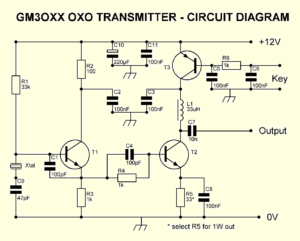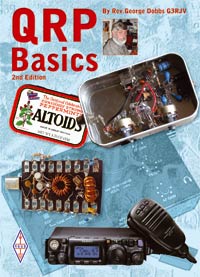QRP – low power operating
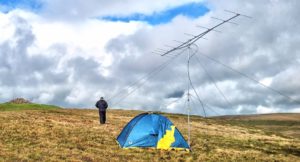
QRP is a way of operating that involves using low power transmitters, that are no more than 5 Watts for Morse or data modes, or 10 Watts pep for voice.
There are many reasons for ‘going QRP’. One of the obvious reasons is to avoid causing interference to other radio users; QRP is less likely to cause EMC breakthrough in an urban setting than running at higher transmitter powers. Portability is an issue for some who like to operate from mountain tops or remote islands; QRP gear tends to be smaller and lighter than the higher-powered versions, but probably the most common reason is to rise to the challenge of making contacts with as little radio frequency energy as possible. Some go as far as only using milliwatts to make their contacts – extreme QRP!
What can be achieved with QRP?
Much depends on the bands used, and propagation conditions. Looking back over the year, when the sunspot count is high, QRP contacts on HF abound; but in years of sunspot minima, the contact rate inevitably drops. However, the winner of the G-QRP Club’s Chelmsley Trophy for the best log of 2019 had over 1400 contacts in it, over 400 using 5 Watts of SSB into a dipole antenna. Over his lifetime, the late George Burt, GM3OXX, worked over 300 DXCC entities with just 1 Watt or less.
On VHF the location of the transmitting antenna has a big influence. The results of the RSGB Backpackers and the Practical Wireless 2m QRP Contests show that stations located on high ground can do very well indeed. In the Sporadic-E season QRP will secure many European and some DX contacts; 500mW can go a long way on 50MHz.
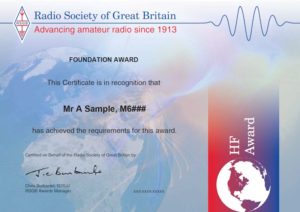 The RSGB’s Foundation Award is, by default, a QRP achievement and a great way to give newcomers a target to aim for. Most RSGB and ARRL awards are available with a QRP endorsement, so if you have already bagged 100 DXCC entities with high power, how about doing it again with QRP? The G-QRP Club has a range of awards starting with just 25 countries worked with QRP.
The RSGB’s Foundation Award is, by default, a QRP achievement and a great way to give newcomers a target to aim for. Most RSGB and ARRL awards are available with a QRP endorsement, so if you have already bagged 100 DXCC entities with high power, how about doing it again with QRP? The G-QRP Club has a range of awards starting with just 25 countries worked with QRP.
What equipment is good for QRP?
Homebrew radio is much easier with low power and there are many kits available to build low-cost QRP transceivers and transverters. SPRAT, the quarterly journal of the G-QRP Club, is full of circuits and modifications for LF, MF, HF and VHF radios. Designs range all the way from those using old valve technology to newer techniques like Direct Digital Synthesisers and Software Defined Radios.
There are also a good number of commercial QRP radios on the market. Notable models include the Yaesu FT-818, and its predecessor the FT-817, the Elecraft KX2 and KX3 and the new Icom IC-705. Many other commercial radios are capable of operating at QRP levels by simply turning down their RF Power.
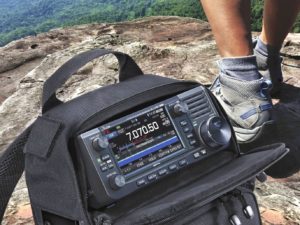
IC-705 – an SDR-based QRP Transceiver
A high gain beam is always a benefit, no matter what power level you are using, but many QRP operators use simple wire antennas and because of the lower power levels, you don’t need heavy duty power supplies, SWR meters or ATUs.
Are there special QRP Frequencies?
Just about every band has centres of activity for QRP work, both on Morse and voice. Check out the RSGB Bandplans for the full details.
Where can I find out more?
There are a number of RSGB books about QRP and the RSGB Bookshop sells ARRL QRP books. Probably the best to start with is QRP Basics by the late George Dobbs, G3RJV. That covers a wide range of QRP topics and includes some circuits for homebrew projects.
Some of the books available for QRP – click a cover for more
The G-QRP Club is for those who are devoted to low power operating. It produces a very well-respected quarterly journal, runs a QRP award scheme, holds an annual Convention and has a Club Sales store for members to buy books, kits and electronic components. The Club has around 4000 members and is subscription rates are extremely reasonable: www.gqrp.com/memb.htm
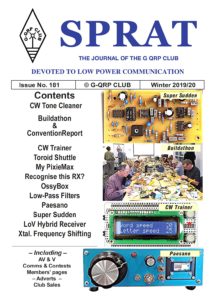
Sprat – The journal of the G-QRP Club

